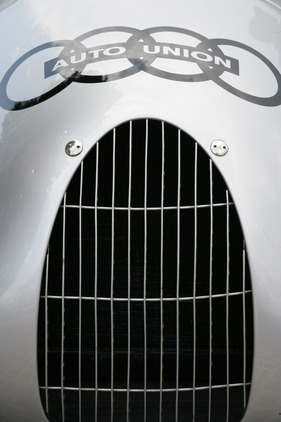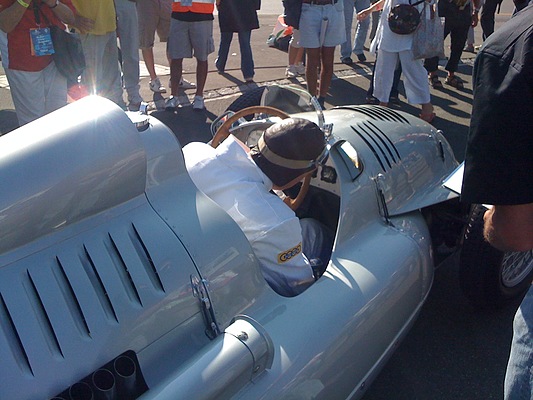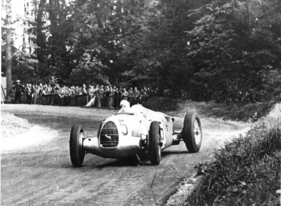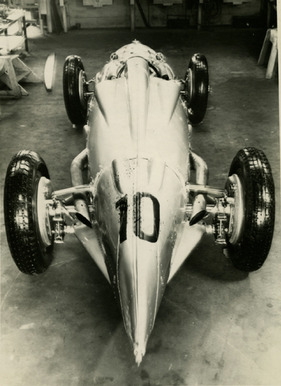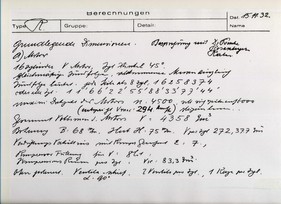The Auto Union Type C - Porsche design number 22
Summary
The AUTO UNION Type C or - as it was called in contemporary terminology - the AUTO UNION 6ltr. Grand Prix car 1936/37 - is both the highest development stage of the Porsche design for a Grand Prix racing car from 1932 and the basis for the chassis concept of the Volkswagen and its numerous offshoots as well as the Porsche 356 until 1965. This paper will attempt to show the development of the chassis and engine of the AUTO UNION Type C 1936-1937.
This article contains the following chapters
- The 750 kg formula
- Wanderer, von Oertzen and Porsche
- The shared subsidy
- Imperial patent no. 692 180
- Three special features of the design in the patent specification
- Adolf Rosenberger and the Benz Tropfenwagen
- Bernd Rosemeyer and the AUTO UNION Type C
- The arrangement of the masses in AUTO UNION GP cars in 1934 and F1 cars today
- The further development of the chassis
- The drive train
- Comparison of the engine data of Auto Union models A, B and C
- Further information
Estimated reading time: 12min
Preview (beginning of the article)
The AUTO UNION Type C or - as it was called in contemporary terminology - the AUTO UNION 6ltr. Grand Prix car 1936/37 - is both the highest development stage of the Porsche design for a Grand Prix racing car from 1932 and the basis for the chassis concept of the Volkswagen and its numerous offshoots as well as the Porsche 356 until 1965. This paper will attempt to show the development of the chassis and engine of the AUTO UNION Type C 1936-1937. Of course, such an important design, which was used for decades, did not "fall from the sky", but was the result of a lengthy development process, the most important stages of which will be briefly outlined for a better understanding. On 12 October 1932, the Porsche office, which was officially entered in the commercial register on 25 April 1931, received the news of the decision by the sports commission of the AIACR (International Association of Accredited Automobile Clubs) on the racing formula for Grand Prix cars valid from 1934: maximum weight 750 kg without fuel, coolant, oil and tires. For the rest, the designer had a free hand. Free displacement, turbocharging and fuel! The challenge of this weight formula, which was implemented for the first time, was for the designer to achieve the optimum within this weight limit using the materials known at the beginning of the 1930s. Ferdinand Porsche felt so spurred on by the specifications that he and his partner and financier Adolf Rosenberger founded "Hochleistungsfahrzeugbau GmbH" on November 1, 1932, a company independent of the design office with Rosenberger as managing director.
Continue reading this article for free?
Photos of this article






































